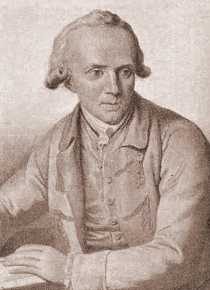Einar Perman
Stockholm, Sweden
 |
| Samuel Auguste Tissot |
Young physicians are told that the doctor should treat the patient, not the disease. This is sound advice, but knowing the patient is often not easy. Even more challenging is the task of having the patient follow medical advice and comply with instructions. I have treated many well-educated patients and have always taken the time to inform them about their disease—its manifestations, prognosis, and therapy. Certain that they absorbed and understood my information, I expected them to follow my recommendations. To my dismay, they did not. They continued their eating, drinking, and smoking habits and showed only moderate compliance with my therapy.
I used to blame myself for not informing them well enough. Later in my practice, I read what Dr. Tissot wrote about this subject in 1769. In An essay on diseases incident to literary and sedentary persons, Tissot relates his experiences with “men of letters:”
The first difficulty to be overcome in restoring the health of men of letters is to convince them that they are in the wrong. They are like lovers, who grow angry whenever any fault is found with the object of their affection; besides the learned have generally a kind of steadiness in their ideas, contracted by study and increased by self opinion, too often the effect of knowledge, which prevents them from being easily persuaded of the hurtful tendency of their conduct.
Warnings, arguments, entreaties, chidings are often used in vain, they find out a thousand ways of deceiving themselves; one depends upon the strength of his constitution; another pleads the force of custom; a third flatters himself he shall still escape, because he has never yet suffered; a fourth encourages himself with examples which prove nothing in his favour; all of them resist the physician’s advice with an obstinacy mistaken by them for resolution, which they think commendable, and therefore become the victims of it.1
These words could just as well have been written 200 years later about some of my own patients. After reading this essay, I decided to learn more about Dr. Tissot.
Samuel Auguste Tissot (1728–1797) was a Swiss physician who practiced medicine in the city of Lausanne most of his life. Starting as physician for the poor, his practice later gained international reputation. Tissot lived during the Enlightenment and was one of the founders of rational medicine. He made clear how essential the knowledge of physics and natural science was for a doctor and wrote, “Whoever is unacquainted with the powers and properties of bodies and the laws of motion will never be able to learn the art of healing.”1
He was the author of several medical publications, and became prominent in Europe as a medical educator. His most famous book was Advice to the public about their health published in 1761.2 It was probably the first medical self-help book, written especially for those who lived outside cities with little or no access to doctors. Tissot lamented that “the way country-people are cared for makes me sad in my heart. I have witnessed insignificant diseases becoming fatal through lack of care.”1 The book had several editions, was translated into many languages, and became probably the greatest medical best-seller of the 18th century.
The title of Tissot’s An essay on diseases incident to literary and sedentary persons suggested a different approach to treating patients—a character-related rather than occupation-related approach. He claimed that their diseases arose from two principal causes: the perpetual labors of the mind and the constant inaction of the body. As positive to exercise as any present-day exercise guru, he explained how the former could probably not be cured, and he advocated regular physical exercises to cure the latter. He later wrote that “it strengthens the fibres, preserves the fluids in their proper state, procures an appetite, facilitates the secretions particularly perspiration, raises our spirits, and produces an agreeable sensation in the whole nervous system.”3
In a similar article from his 1770 publishing of An essay on diseases of prominent men, Tissot analyzed the health problems of very wealthy individuals and the nobility.3 He claimed that the central issue was their lifestyle. They did not work, and had to come up with things to do in order to avoid the constant idleness to which they were otherwise condemned. He also commented on the abundance of food that they were exposed to.
In his later years, Samuel Tissot devoted himself to the needs of hospital medicine and the continuing education of physicians. His fame reached Corsica where in 1787 Napoleon Bonaparte (then an 18-year-old artillery officer) wrote a letter to express the profound respect he had for his work and to compliment him for his “days in treating humanity.”4 Tissot understood that natural science and humanistic knowledge must unite in the art of healing. As an early proponent of uniting medicine and culture, he believed that the bond between physics “and the study of languages, history, and literature is not quite so striking” and the latter must be an important part of a doctor’s knowledge.
References
- Tissot, Samuel Auguste. 1769. An essay on diseases incident to literary and sedentary persons. London: Printed for J. Nourse.
- Tissot, Samuel Auguste. 1761. Avis au peuple sur sa santé. Liège.
- Tissot, Samuel Auguste. 1770. Essai sur les maladies des gens du monde. Comp. Francois Grasset. 2nd ed. Lausanne.
- Bonaparte, Napoleon.1893. To Doctor Tissot, F.R.S. Napoléon Inconnu:Papiers inédits,1769–1793 1. Paris: Printed for Frédéric Masson, 167; see also Bonaparte, Napoleon. 1961. Letters and documents of Napoleon, Volume I: The rise to power. Selected and translated by John Eldred Howard. London: The Oxford University Press.
EINAR PERMAN, MD, PhD, is a retired physician living in Stockholm, Sweden. He is a member of our international editorial board.
Highlighted in Frontispiece Fall 2011 – Volume 3, Issue 3
Fall 2011 | Sections | History Essays

Leave a Reply